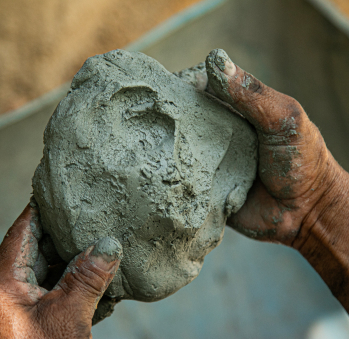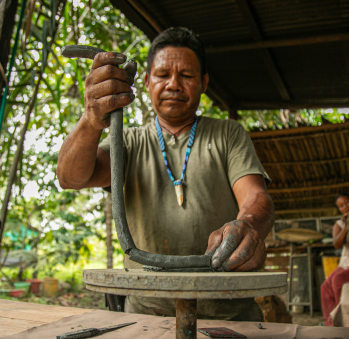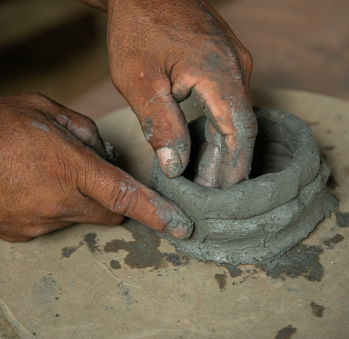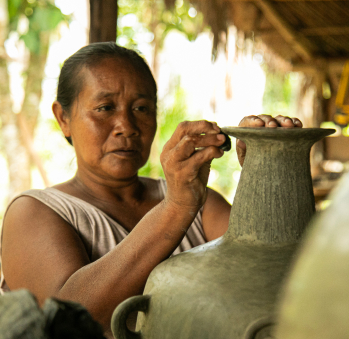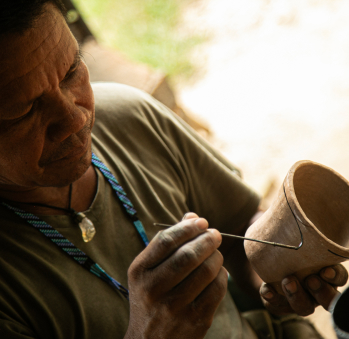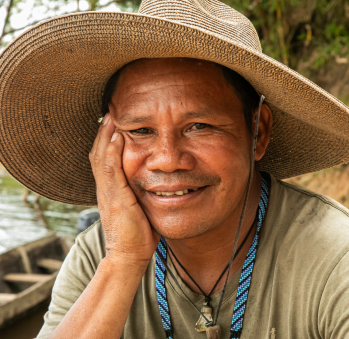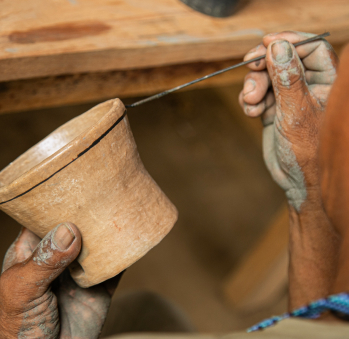Rodrigo López Ortiz
Workshop: Ceramicas etnicas Cubay
Craft: Alfarería y cerámica
Trail: Vaupés Route
Location: Mitú, Vaupés
Visiting Mitú and seeking out Rodrigo López and his family is your gateway to discovering the secrets of blue clay ceramics firsthand. Legend has it that this type of clay is born from a blend of the earth’s soil and boa constrictor waste, and it’s believed that if proper permission isn’t sought before taking it, the source disappears. Its use is intricately linked to the traditions of indigenous groups in Vaupés, Guainía, and Guaviare. This tradition was passed down to Ramiro, a Cubeo man belonging to the third Pami clan, by the elders Leonor González and Elena Valencia—Leonor, a Cubeo woman, and Elena, a Guanana woman.
Rodrigo grew up witnessing grandmothers expertly crafting clay plates, pots, and vessels used for cooking fish. This craft, sealed and mysterious, belonged to the realm of adult women. A similar experience shaped Lucía Chequemarce, Rodrigo’s wife, who observed her mother working with clay from a distance as young girls weren’t permitted to touch it. Both Rodrigo and Lucía found themselves drawn to this exclusive and enigmatic material, and in 2005, their opportunity to delve into its secrets arose. Rodrigo participated in a three-year investigation aimed at reviving the wisdom of elders Leonor and Helena regarding blue, yellow, red, and white clay, as well as researching traditional ethnic symbols with the guidance of an elder wise man. The investigation received support from the Etnollano Foundation and was funded by the European Union. By 2008, they had delved into the processes of clay-making and documented over 20 symbols, encompassing themes such as grief, dance, meetings, knowledge exchange, fish serving, and baptism. Rodrigo recalls that learning a single symbol often required up to fifteen sessions, where they would gather around the fire, share mambe, and absorb wisdom between 2 and 5 am—a time when thoughts and worlds clarify.
After mastering the theory, the time came to apply their knowledge. For two years, they experimented with ways to seek the permission of the elder spirit Nigua to collect clay and searched for the cemento tree, whose bark they collected and burned to mix its ashes with the clay—a blend prepared by their ancestors for centuries. Rodrigo discovered that contrary to what he’d been told, being a man working with clay didn’t hinder his success as a fisherman in the river. They continued practicing, and by 2010, they could shape pieces with walls as thin as those made by their mentors. During this period, Rodrigo often thought of his grandfather while gazing at the night sky, seeking guidance for his future. His answer came when, upon showcasing their creations at a fair in Mitú, they sold out.
The artisanal practices of Rodrigo, Lucía, and their children, who transitioned from ceramists to woodcarvers, maintain a special connection with tradition and rituals. Over the years, they’ve learned to communicate with their materials, preserve them, and respect them as they would any living being. Though dedicating his life to a craft traditionally practiced by women presented challenges, Rodrigo now proudly carries the legacy and guardianship of blue clay. He’s also a representative of traditional symbolism, depicting the butterfly, the guardian of the moon, and fish scales on clay vessels using the traditional Cubeo paintbrush—a chonta stick paired with a lock of each craftsman’s wife’s hair. He has shared his profound knowledge in Tokyo and the Sierra Nevada de Santa Marta, exhibiting at fairs across the country. Often, buyers of their vessels are unaware of the significant stories and symbolism behind each piece. That’s why whenever possible, Rodrigo shares the narrative and cultural importance behind the pottery with each new owner. If you visit their workshop in Mitú, this generous family will eagerly share the intricacies of their craft—secrets that wouldn’t fit within these pages.
Craft
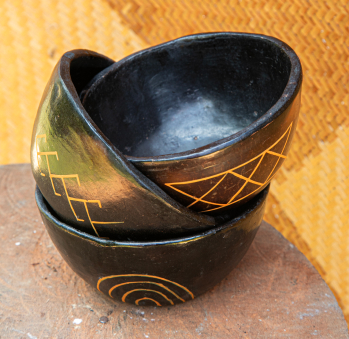
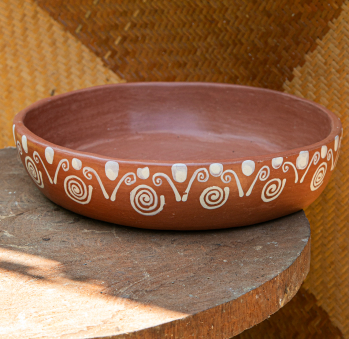
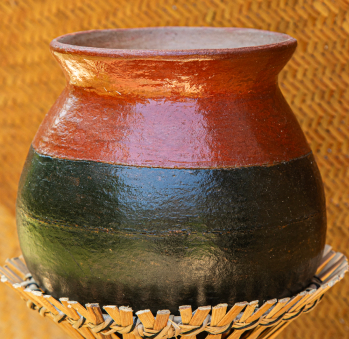
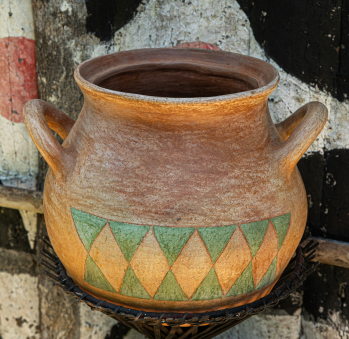
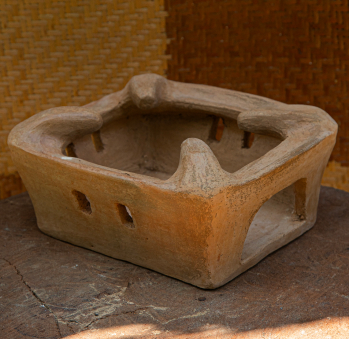
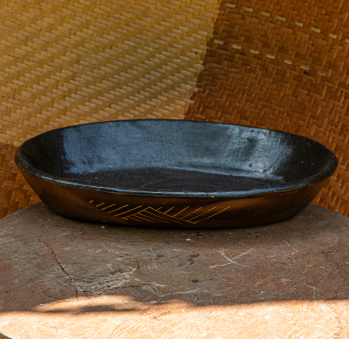
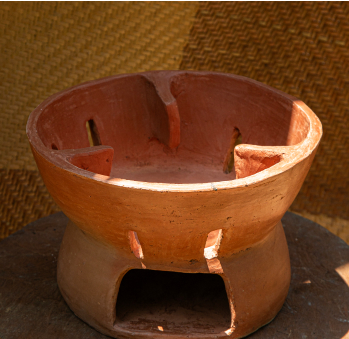
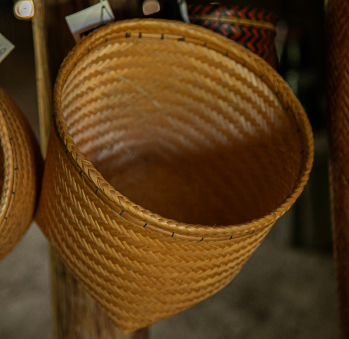
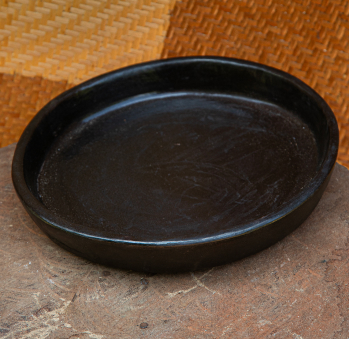

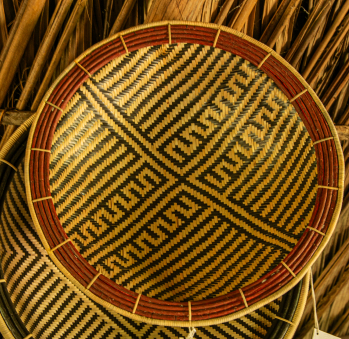











Artisans along the way
Artisans along the way
No puede copiar contenido de esta página








































